Traditional Scotch Yoke Design Compromises
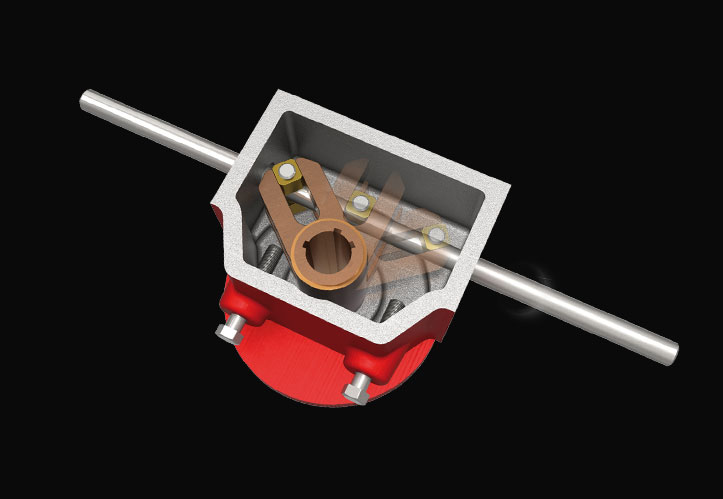
The Scotch Yoke Mechanism
The basic scotch yoke actuator consists of a slotted lever through which a rod passes while applying a force to the lever that is generated by pressure acting on a piston. The lever is longer at the ends of stroke so that a given force results in more torque at the ends of travel than at the mid-travel positions. Additionally, the angular relationship between the input force and the lever also acts to increase the torque output.
A PRICE TO PAY:
The increased end of stroke torque does not come without penalty
which is a very high side loading force acting on the rod.
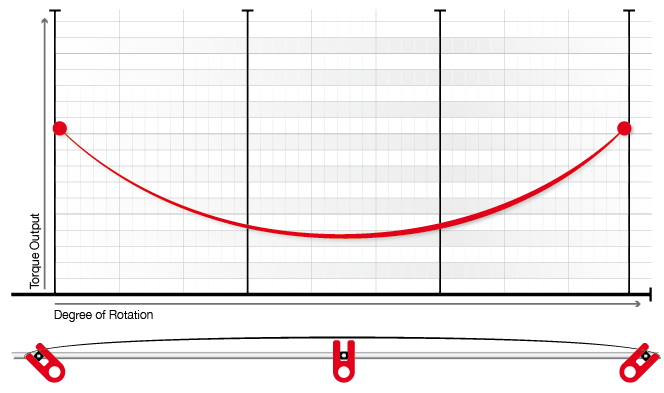
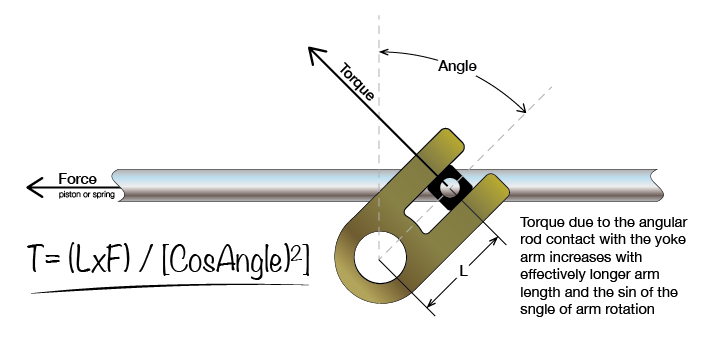
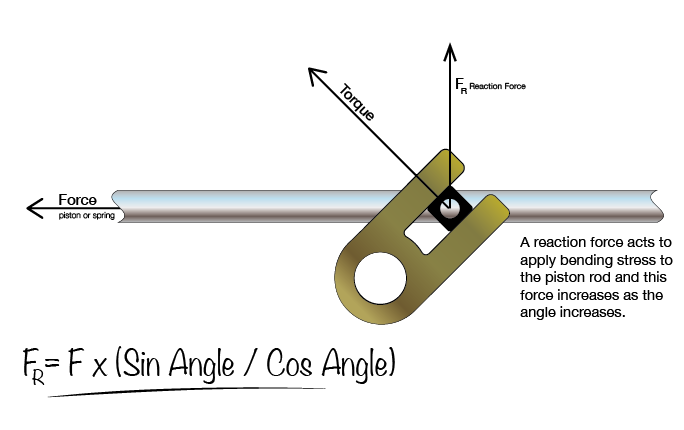
Traditional Scotch Yoke Actuators
As demonstrated, the scotch yoke mechanism provides an ideal torque characteristic for many types of valves and as the valve torque requirements increase, the scotch yoke becomes a relatively lower cost design to manufacture. Because of the side loading forces applied to the rod, designers must contend with how best to provide rod support. Lacking an alternative means, designers (and those that have copied them) extend the rod through the actuator body to obtain support from the bushings on both ends.
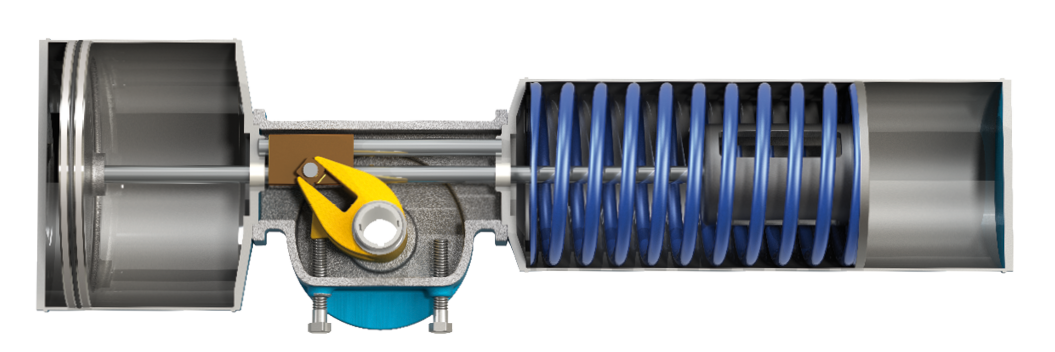
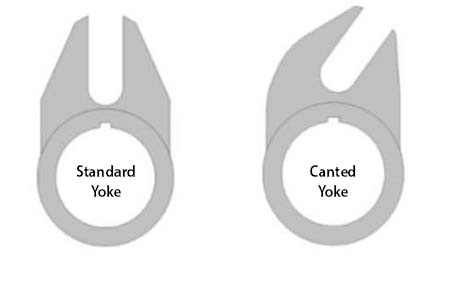
Traditional scotch yoke actuators are offered with two different yoke types commonly referred to as standard/symmetric and canted yokes. The standard yoke design is commonly used when the torque requirement at an intermediate travel position needs to be greatest. This valve intermediate torque is commonly referred to as the run torque. A standard yoke design is advantageous for plug valves and some ball valve applications. A canted yoke is not symmetrical and features an inclined yoke which shifts the actuator torque curve to have a greater torque at the beginning and end of travel. The intermediate torque is reduced with a canted yoke design. The canted yoke construction is desirable for butterfly and most ball valve applications
Design Compromises
Because the rod extends through the torque module the typical scotch yoke actuator is limited to a single lever arm and the force module(s) must be located on the axis of the rod. Usually the heavier and longer spring module is located at one end of the rod and the lighter, shorter piston module at the other end. This results in a weight imbalance which impacts lifting as well as stresses applied to the valve mounting. The single lever arm pivots on a shaft bushing which supports the full force of the spring and piston modules with friction and wear impacting and limiting the actuator cycle life.
A Disruptive Technology
The Flat Yoke actuator employs a basic scotch yoke mechanism but with a patented means to eliminate the side loading of the rods that permits terminating the rod at the yoke lever and not passing it fully through the body nor requiring rod support bushings. The spring and piston are combined into a one side mounted force module in a manner that enables mounting an identical spring/piston force module onto the torque module diagonally opposite the first. This results in a two lever design which balances the forces, eliminating the side loading of the shaft bushings and greatly increasing the cycle life of the actuator while also providing a weight balanced actuator for ease of lifting and reduced stress on the valve mounting.
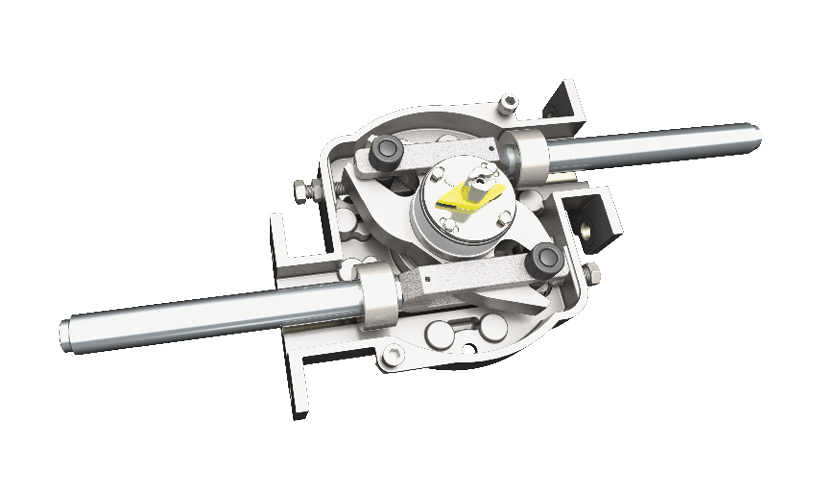
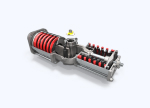
Q Series
Offset cylinders align the piston axis with the pinion gear pitch circle diameter, eliminating the cantilever forces inherent in rack and pinion type actuators. Low friction rollers maintain correct engagement of the stainless steel gearing for absolutely exceptional cycle life.
The reduced friction enables outstanding throttling control as demonstrated in numerous 'typical diaphragm actuator' applications where corrosion or high vibration dictated a better solution
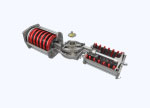
F Series
A unique slotted body concept absorbs 100% of the yoke mechanism's side loading forces leaving the piston rod completely free of bending stresses while allowing termination of the rod at the yoke, and the addition of a weight and force balancing second force module diagonally offset from the first. The balanced weight makes lifting and handling of the actuators safer and easier, while reducing valve neck stress caused by unbalanced scotch yoke actuators. Internally, the balanced forces assure less friction loss and less wear as there is no net force applied to the shaft bushings.
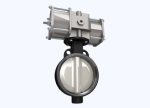
T Series
The T-Series actuator demonstrates how we are committed to making life easier. An OEM of over the road bulk carriers was impressed by the capabilities of our Rack & Gear® actuators and they appreciated our ability to mount to numerous valves simply by selecting the proper adapters and mounting plate.
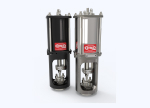
L Series
Using captured springs and the linear components of our rotary, our L Series Actuators provide a safe, long lasting, low friction, stainless steel substitute for diaphragm types in a smaller package for resistance to corrosion and vibration.
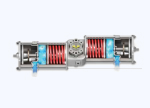
XRCISER®
The standard QTRCO actuator uses a travel stop screw in the end cap to limit outward travel of the actuator piston, and therefore valve travel. In the XRCISER® configuration the pneumatically engaged tandem pistons become the outward travel stop. By confirming tandem piston pressure and position; spurious valve travel is prevented during the partial stroke cycle.
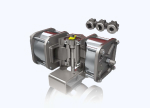
Accessories
A wide range of valve actuator accessories make your valve actuator more useful and versatile.
